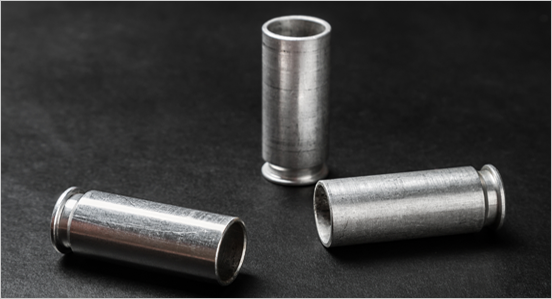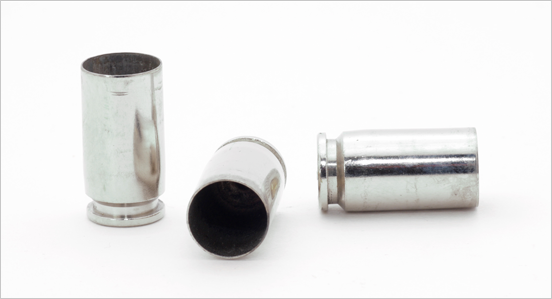Ammunition casings are made from a variety of materials - each with pros and cons.
Over the years, this has led to a lot of debate and confusion surrounding the various types of ammo casings.
There are five main types:
- Brass
- Steel
- Aluminum
- Brass-plated
- Nickel-plated Brass
Keep in mind, when people talk about ammo casings, they are only referring to the case portion of the cartidge. It has nothing to do with what the actual bullet is made of.

Which Type of Ammo Casing is Best?
Because the different materials have inherently different characteristics, there is much debate and confusion around the topic "which type of ammo is best."
Some people are avid brass users and would never put less expensive steel or aluminum in their gun. Others think steel extracts better. Still others like the fact that aluminum is lighter.
So what type of gun casing is best? It depends.
Ammo casing affects how a gun functions and how a bullet moves through space once fired. Each casing material acts differently. So, which one is best, depends on your gun and what you want to accomplish with it.
- Are you practicing at the range?
- Are you carrying for self-defense?
- Are you competition shooting?
- Are you hunting?
Like many other things in life, there is no single answer.
Brass Ammo Casings
Brass-cased ammo is known for how consistently it fires.
Because of the maleability of brass, a brass-cased cartridge expands once it's fired and creates an even seal in the chamber. This, in turn, creates an even "pressure build" which is necessary for reliability and accuracy.
Brass-cased ammo is:
- Strong
- Easy to reload
- Corrosion resistant

Steel Ammo Casings
When you're shopping for ammo, you're apt to notice that the price tag on steel-cased ammo is more attractive than that on brass-cased options.
Steel-cased ammo is:
- Versatile
- Cost-effective
- Available in many calibers

Aluminum Ammo Casings
Like steel-cased ammo, aluminum-cased ammo tends to be more cost-effective than brass options.
Aluminum-cased ammo is:
- Cost-effective
- Lightweight
- Durable

Plated Casings
Plated casings are ammunition that has a base metal which has been elctroplated. Frequently the plating material is nickel.
Nickel plated brass ammo is:
- Highly resistant to corrosion
- Slick, so it feeds well in semi-automatic firearms
- Easy to load and unload in revolvers



